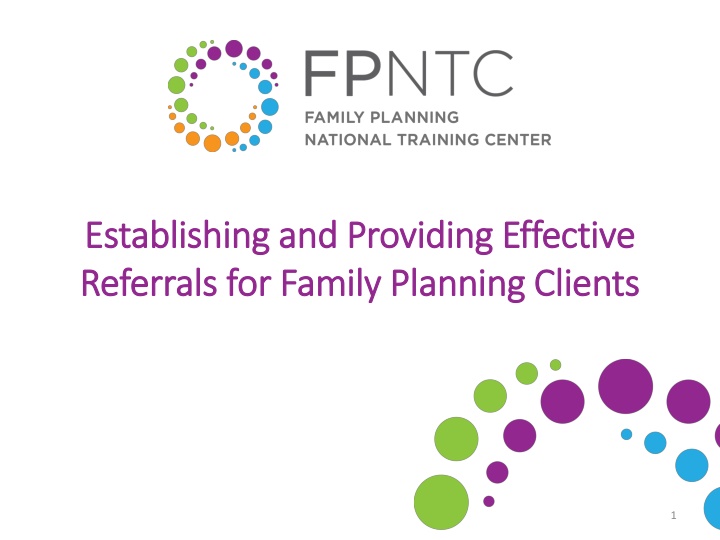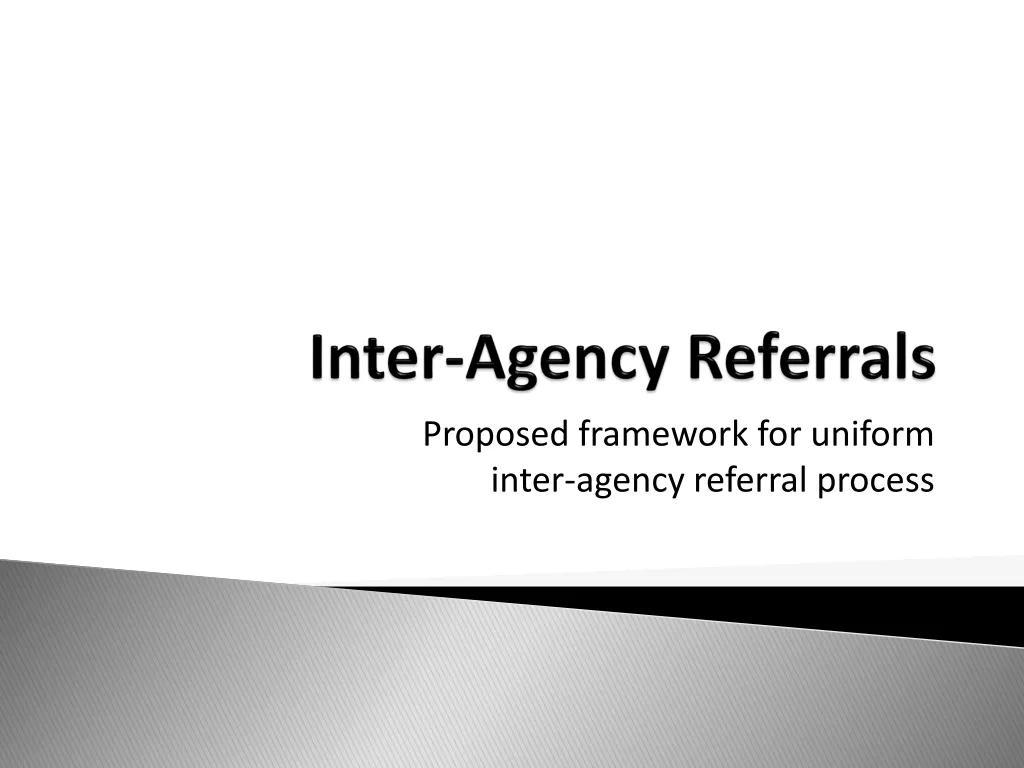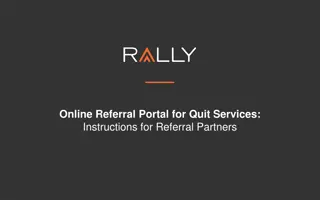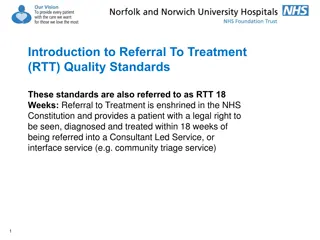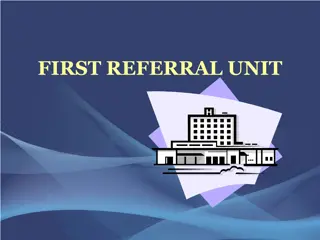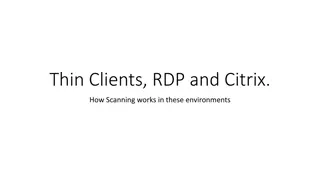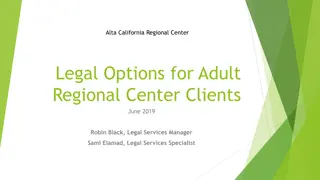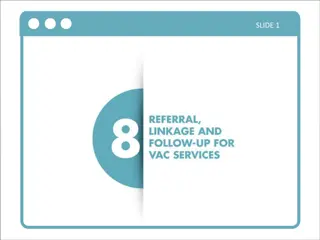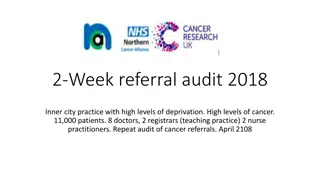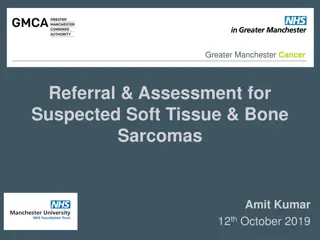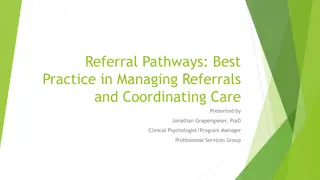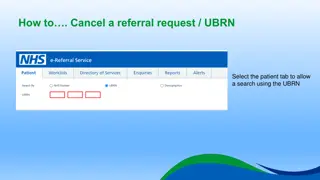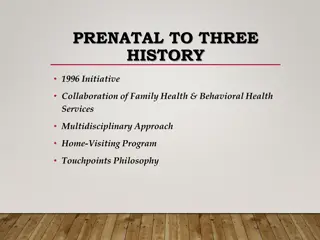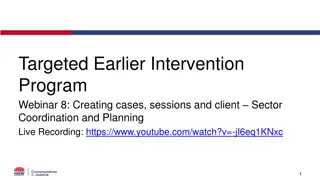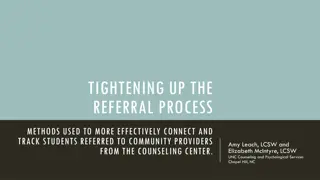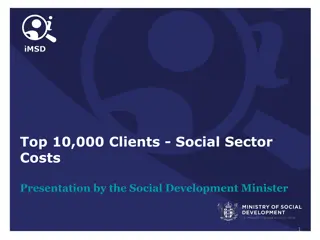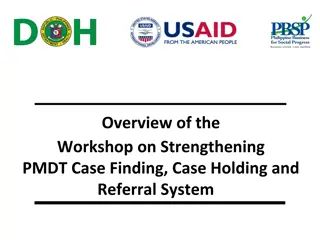Effective Referral Strategies for Family Planning Clients
This content outlines the importance of effective referrals for family planning clients, emphasizing the Title X Program requirements, reasons for quality referrals, and strategies to create systems for high-quality referrals. It also highlights the role of family planning as an entry point to health care and the various service providers for referrals, including social services agencies, healthcare providers, hospitals, and more.
Download Presentation

Please find below an Image/Link to download the presentation.
The content on the website is provided AS IS for your information and personal use only. It may not be sold, licensed, or shared on other websites without obtaining consent from the author.If you encounter any issues during the download, it is possible that the publisher has removed the file from their server.
You are allowed to download the files provided on this website for personal or commercial use, subject to the condition that they are used lawfully. All files are the property of their respective owners.
The content on the website is provided AS IS for your information and personal use only. It may not be sold, licensed, or shared on other websites without obtaining consent from the author.
E N D
Presentation Transcript
Establishing and Providing Effective Establishing and Providing Effective Referrals for Family Planning Clients Referrals for Family Planning Clients 1
Learning Objectives Learning Objectives By the end of this session, participants will be able to: Describe the Title X Program Requirements related to providing referrals Explain at least two reasons providing effective referrals is critical to quality care List at least three strategies for creating systems to provide high-quality referrals 2
Family Planning is Entry Family Planning is Entry Point to Health Care Point to Health Care Usual Source Usual Source of Care for of Care for Title X Clients Title X Clients Other site, 40% Family planning service site, 60% Source: Gold RB et al, Next Steps for America's Family Planning Program: Leveraging the Potential of Medicaid and Title X in an Evolving Health Care System. Guttmacher Institute 2009. 3
Title X Program Title X Program Requirements Requirements Availability of Social Services: Availability of Social Services: Other social and medical services agencies, any ancillary services which may be necessary to facilitate clinic attendance Availability and Use of Referrals: Availability and Use of Referrals: Other providers of healthcare services, local health and welfare departments, hospitals, voluntary agencies, and health services projects supported by other federal programs Provision of Family Planning and Related Services: Provision of Family Planning and Related Services: Necessary referrals to other medical facilities when medically indicated 4
Other Health & Social Other Health & Social Service Providers Service Providers Emergencies that require referral Other providers of health care services not provided on site Infertility specialists Health services projects supported by other federal programs Chronic care management providers Behavioral health services HIV/AIDS care and treatment Hospitals Local health and welfare departments Voluntary agencies Child care agencies Transportation providers Emergency housing WIC programs 5
Establishing and Providing Establishing and Providing Effective Referrals Toolkit Effective Referrals Toolkit 6
Written Policies Written Policies Develop Written Policies for Referrals 7
Relationships with Other Relationships with Other Service Providers Service Providers Explore and build relationships with other service providers Initiate conversations with specialists, hospitals, and community services Determine the value-add of potential referral partnerships Primary Care Partnership Video 8
Local Resource List Local Resource List 9
Referral Agreements Referral Agreements A memorandum of understanding (MOU) is a written document, generally not legally binding, that outlines a voluntary agreement between parties. 10
Referral Types Referral Types A cold cold referral may be appropriate for services like: A warm warm referral may be appropriate for services like: Syphilis treatment Alcoholics Anonymous Weight management treatment Evaluation of a palpable breast mass Food stamps An HIV positive test result WIC Prenatal care 11
Provide Supportive Provide Supportive Referrals Referrals Clients face potential barriers to accessing services: Finances Language Transportation Lack of child care Age-based consent issues Legal and policy Fear of disclosing Fear of a lack of privacy Fear of judgement Fear of scorn, intimidation, coercion, or threats immigration status 12
Provide Referrals Provide Referrals Proactively Proactively Train staff on skills needed to: Identify referral needs Speak directly to the provider Provide a verbal and/or written handoff Manage difficult situations Follow up with the client about the referral 13
Document and Develop Document and Develop Systems Support Systems Support Designate staff roles Use a standard protocol and consistent documentation in the medical record The reason for referral, informed consent of the client, and any correspondence with the referral provider/organization should be included. Develop shared referral tools and processes for services that you regularly refer to 14
Sample Referral Form Sample Referral Form 15
Close the Loop Close the Loop Identify client preference for communication and follow up Set clear expectations at the time of referral Ensure confidentiality for any provider to provider communications 16
Track Referrals Track Referrals Ensure adequate management of referrals EHR download Referral management software Manually enter on a grid 17
Apply Principles of Apply Principles of Quality Improvement Quality Improvement Verify referral information annually If a referral is not completed, ask and document the reason Periodically assess effectiveness of referral services Ask clients Ask referral agencies Use principles of quality improvement to make changes to the referral process as necessary 18
STAR Model for Referral STAR Model for Referral Quality Quality Be a STAR: S Supportive Meet their needs T Thorough Pass on knowledge A Active Identify potential barriers R Referral quality Learn from and update 19
Peer Observation Peer Observation Activities Activities Pair off. Use Handout 1: STAR Model Select and act out one or more scenarios. Role-play and get feedback from partner. Switch roles and repeat. Ask one pair of volunteers to role-play a scenario for the larger group. 20
Reflection Reflection What went well? Not so well? Was every aspect of the STAR model considered? S Supportive? T Thorough? A Active? R Referral quality? 21
Thank you! Thank you! www.fpntc.org 22
